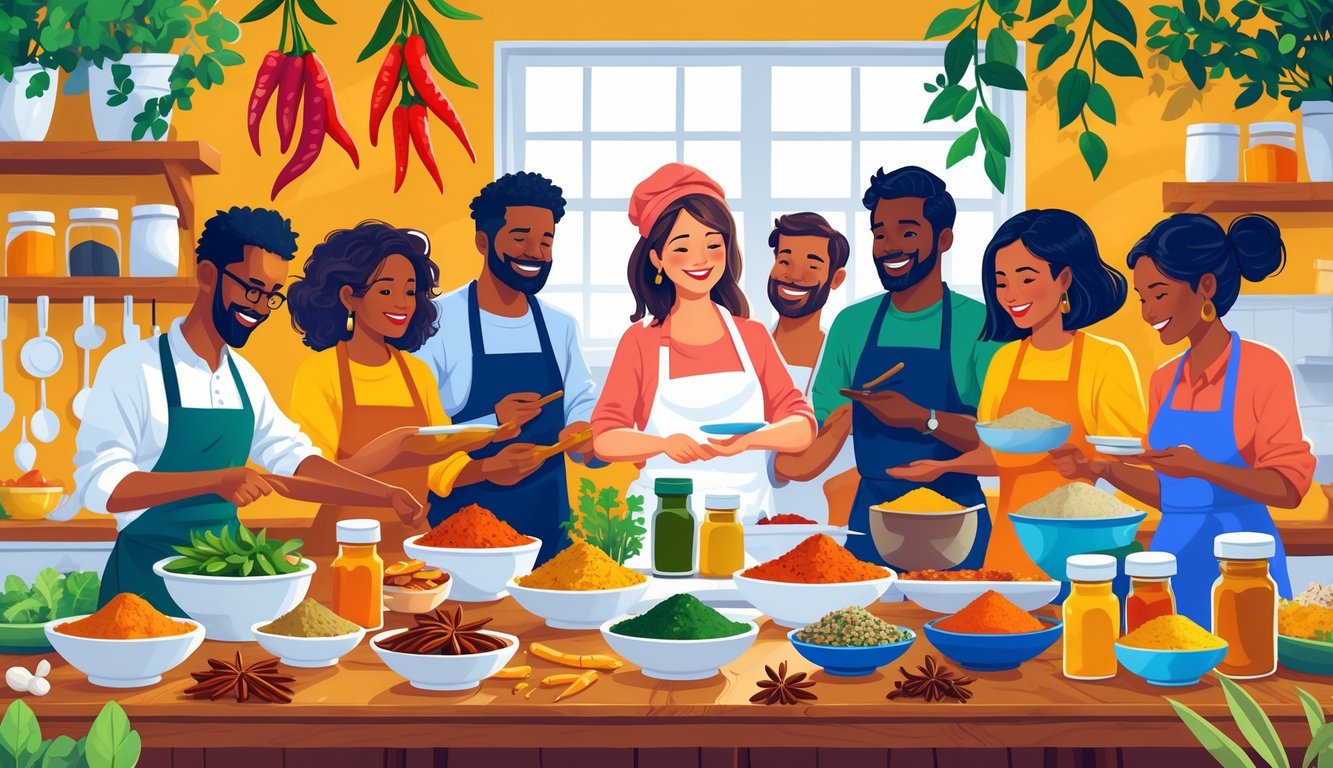
Exploring the Future of Spices in Everyday Kitchens
Spent twenty minutes digging for berbere the other day. Why do I even own berbere? Every home cook I know suddenly needs it next to the flour. Imports keep getting weirder—a shop near me started selling gochujang powder right after some YouTuber used it. Most days, I open my spice drawer and forget what half the jars are for, but honestly, that’s half the fun.
What’s Next for Bold Flavors and Global Spice Markets
Alright, so—za’atar’s suddenly everywhere, but does anyone outside of food writers actually know what to do with it? I keep seeing these wild claims like, “Nigerian suya and Korean gochugaru will double in home kitchens by 2026.” Really? Maybe, maybe not. I mean, the global spice trends show Mediterranean and North African blends are outselling the old taco seasoning at some bougie stores, which is… surprising? Or maybe not, if you hang out on FoodTok.
Meanwhile, everyone’s obsessed with “functional spices,” whatever that means. Turmeric’s in everything, and I have at least two friends who sneak pepper into lemon water (gross) or overnight oats (worse). The spice market’s outlook blames Instagram meal preps and allergy trends, but then you see import numbers from Southeast Asia and Africa only bumped up 8% last quarter. Eight percent! Not exactly a revolution. But sure, spices are now a status symbol, and every time I wander through the grocery store, there’s another blend with a name I have to Google. Salt and pepper are boring now, apparently.
Frequently Asked Questions
So now my spice rack’s half full of stuff I can’t spell, and I keep losing the asafoetida. Turmeric stains everything, including my sleeves. People keep asking me if sumac and za’atar are the same thing (they’re not), and honestly, I’m tired of explaining it.
What are some must-try global spices for enhancing flavor in home-cooked meals?
In the middle of cooking, I’ll realize I need sumac for a pop of brightness—not just for salads, no matter what the label says. Aleppo pepper? I toss it in eggs. Garam masala sneaks into everything because, why not.
One time I bugged a chef at the market about this, and he swore by single-origin blends for “real” flavor. But then I see someone on Reddit putting baharat on popcorn, so who even knows. Cookbooks act like everyone has urfa biber just lying around. (I don’t.)
Can you suggest ways to incorporate more turmeric into everyday cooking?
I’ve dumped turmeric into smoothies (regret), but only because some wellness influencer promised it’d help with recovery. Accidentally turned my oatmeal yellow—again. Usually, I just throw turmeric into rice or soup, or even coffee sometimes, which is weirdly good.
Forget the fancy latte art. I just add a scoop to whatever curry I’m making. My friend swears black pepper “activates” the turmeric—she heard it on a podcast, so it’s basically science, right?
Which international spices can provide significant health benefits?
Here’s what gets me: every week, there’s a new headline about saffron being an antioxidant miracle (as if anyone can afford it) or cumin helping digestion. Johns Hopkins said black seed (Nigella sativa) might help your heart, but they also say that about green tea and, let’s be honest, who’s giving up coffee?
Cinnamon’s in everything now for “blood sugar,” even pancakes. That feels like a stretch. Labels now brag about “wellness” benefits, which is both comforting and kind of annoying when you just want something spicy.
What are the top global spices recommended for beginners in cooking?
Whenever someone moves, I give them smoked paprika and garam masala. Not because I’m original, but because accidentally using five-spice instead of cinnamon in banana bread is how you ruin breakfast. Paprika, cumin, coriander—easy to say, hard to screw up.
Would I hand berbere to a beginner? Nope. Sumac, though? Absolutely. There’s this ongoing joke among my friends about mixing up cumin and caraway. Honestly, it still happens to me.
How do I choose the best quality spices for my kitchen endeavors?
So now I’m standing in front of a wall of spice jars, trying to figure out what’s actually fresh. Price doesn’t mean much. The freshest spices usually look brighter, and apparently you’re supposed to ask about harvest dates—does anyone really do that? I just open the lid and smell it. If it smells like an old attic, it’s probably as old as my college hoodie.
Some local shops brag about ethically sourced single-origin spices, and honestly, sometimes they’re onto something. I avoid the giant bulk bins now, after opening one and realizing it smelled like sawdust. Lesson learned.
Could you list some spices that are gaining popularity in 2025 for their health properties?
So, apparently fenugreek is having a moment—like, overnight, it’s everywhere, and I honestly can’t tell if it’s legit or just the latest “superfood” everyone’s pretending to know about. Blood sugar benefits, they say. Sure. Maybe? I keep stumbling over these adaptogenic blends—ashwagandha, moringa, whatever else they can cram into a protein bar. I still have no clue how to pronounce half of these, and I definitely avoid saying them out loud in public. Is anyone else doing that thing where you just mumble and hope nobody notices?
Turmeric refuses to leave, which, fine, but now people are talking up long pepper and grains of paradise. I mean, “grains of paradise”? That’s not a real thing, right? Sounds like a band I accidentally saw at a festival and pretended to like. And then there’s schisandra berry—supposed to help with stress, allegedly, but nobody bothered to mention it tastes like you licked a Christmas tree. Does anyone actually keep this stuff in their kitchen, or is it just food bloggers? I don’t know. Maybe I’m missing out. Or maybe I’m just not that into the taste of pine.



